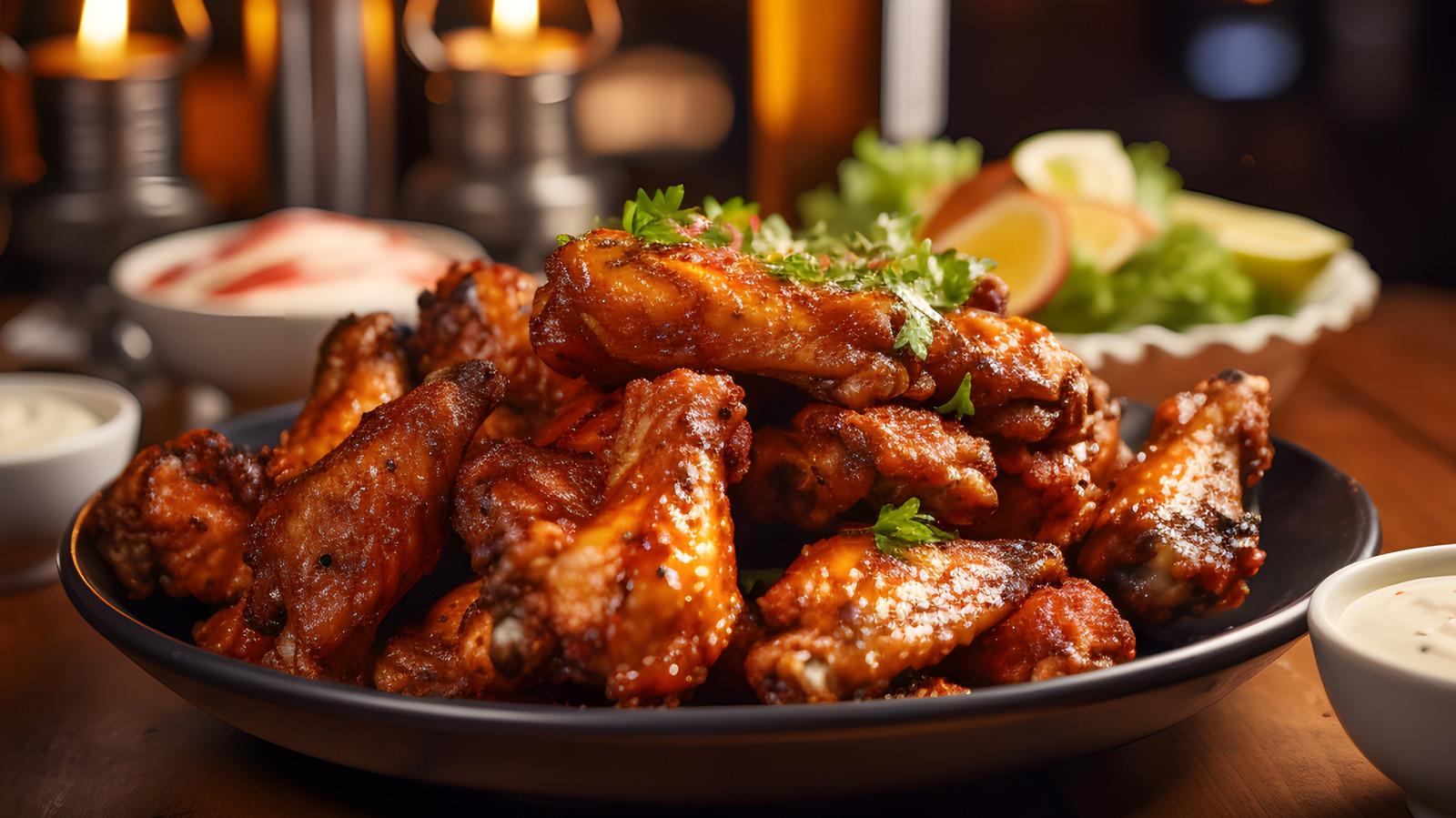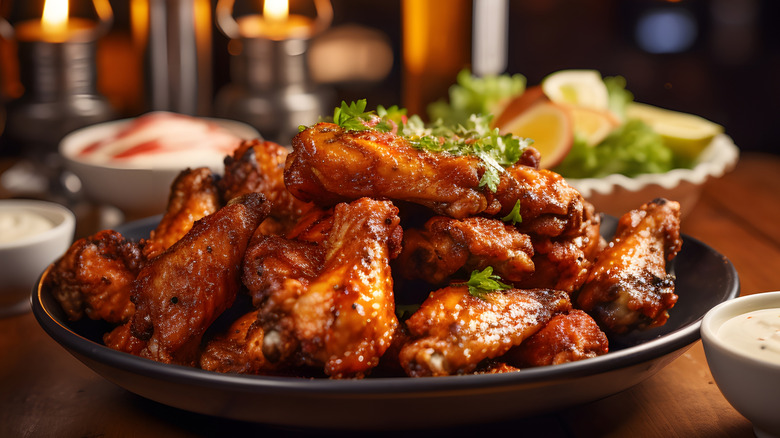
Jason Grant/Shutterstock
Chicken is a versatile ingredient. (See our our selection of the 70 best chicken recipes for dinner.) From stir fry recipes to chicken tendies, there seems to be an endless array of preparations suitable for this popular white meat. That doesn't mean that cooking chicken is necessarily easy, as poor technique can leave you with a dry, bland bird that's a far cry from the high-quality chicken dishes you typically get from restaurants. So, what gives? Are commercial chefs sitting on the secrets to juicy, flavorful chicken?
In a sense, yes, but that doesn't mean you can't deploy these tricks of the trade in your own kitchen. To create restaurant-quality chicken dishes, one must season correctly (and liberally), prime the meat for maximum juiciness, and be mindful of cooking and resting times. These steps combat issues with dryness and lack of flavor, which is the primary complaint of people tackling chicken in their home kitchens. These techniques can also be applied to all sorts of dishes, whether you're grilling, frying, baking, or sautéing the meat.
Lack of seasoning
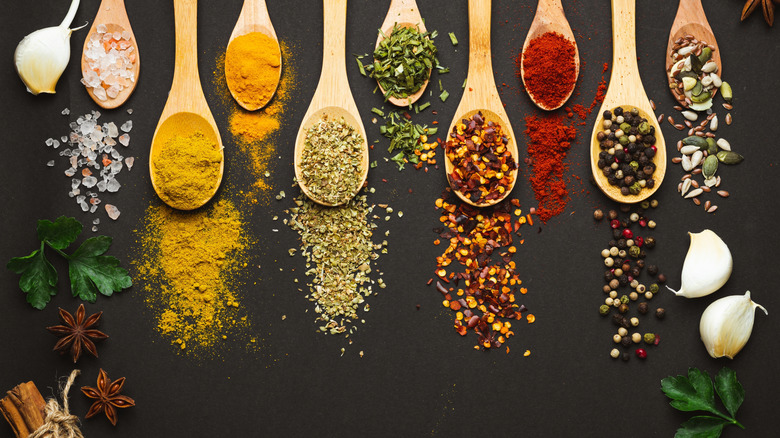
Barone Romano/Shutterstock
For those unfortunate souls born without an inherent talent for cooking, under-seasoning is an ongoing concern. While bold, in-your-face flavors are great, the amount of seasoning required to achieve them could seem alarming to a novice. Fortunately, there are some general rules you can follow to ensure you sufficiently season chicken. With salt, adding about 1 teaspoon per pound of meat should serve you well. When it comes to other seasoning blends, such as Italian or Tex-Mex, you'll want to add 1 to 2 tablespoons per every pound of meat.
If you're seeking a tasty blend suited to chicken, a homemade poultry seasoning recipe containing nutmeg, thyme, rosemary, black pepper, and other components can rescue the meat from blandness. Marinade offers an additional way to bring homemade chicken dishes closer to restaurant quality. They typically feature acidic ingredients like vinegar and citrus juice that soften the proteins in the meat to make it more tender while permeating it with tasty flavors. Folks who want to go that route should marinate chicken in the refrigerator for two to three hours to ensure max flavor and an amazing texture.
Skipping the all-important brining step
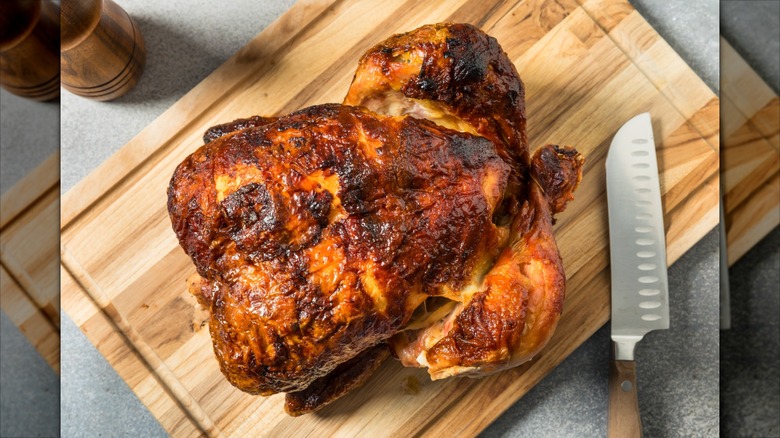
Brent Hofacker/Shutterstock
Another area where restaurant chefs outpace home cooks is brining, an often-neglected step when it comes to cooking chicken. Wet brining involves placing meat into a salty solution to break down proteins and flood the poultry with moisture for a juicier bird bursting with flavor. Then there's dry brining (also known as salting, as the lack of liquid prevents this method from being a true brine), which entails applying a dry rub consisting of kosher salt and other spices all over the meat prior to cooking.
Both methods have pros and cons; wet brining is faster but finding a vessel large enough to accommodate the chicken and fit into your fridge is challenging. On the other hand, dry brining is more convenient but can take up to two days to work its magic. For comparison, you can wet brine a whole bird overnight (and here's an easy chicken brine recipe to get you started). If you're a fan of crispy chicken skin, wet brining might fail to return the same results as salting, which can create a delectable outer crust on the meat. Regardless of which method you ultimately choose, brining is a reliable way to enhance the quality of your homemade chicken.
Allowing the chicken to get too hot (and not letting it rest)
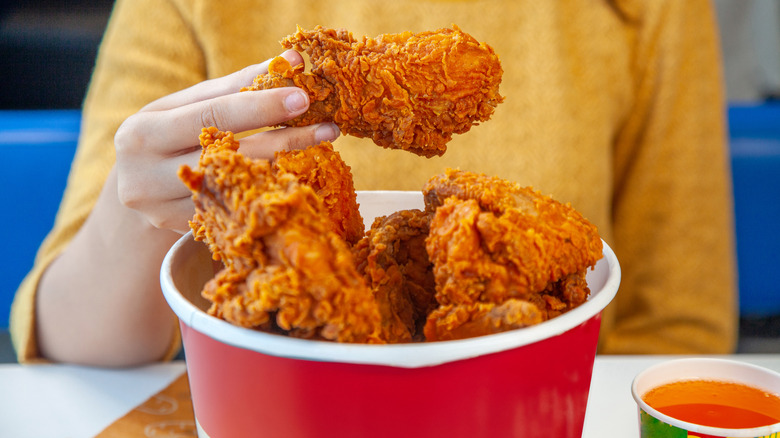
Saminaleo/Getty Images
Raw chicken has a higher risk of harmful bacteria than various other meats, which leads some home chefs to overcook it to ensure optimal food safety. The USDA recommends a minimum internal temperature of 165 degrees Fahrenheit for all cuts of poultry, including breasts, thighs, and wings, and it's paramount that any chicken dishes you prepare reach this stage. There is a happy medium between a dry bird and food safety risks, however, and you can achieve it by allowing the meat to rest after cooking.
Resting meat encourages maximum juiciness, as it provides time for the moisture within muscle fibers to flow back into the meat. Additionally, the chicken will continue to cook while it's resting, so clever restaurant chefs typically remove the poultry from the heat before it reaches the safe internal temperature. With all cuts of white meat, you can cut the heat when internal temps reach 155 to 160 degrees Fahrenheit. Dark meat is naturally juicier, so it can reach internal temperatures of 165 degrees Fahrenheit or more without experiencing significant moisture loss. A meat thermometer is the only accurate way to determine the internal temperature of chicken. In this case, be sure to avoid common meat thermometer mistakes like not calibrating the device and inserting the probe into fat or bone.



